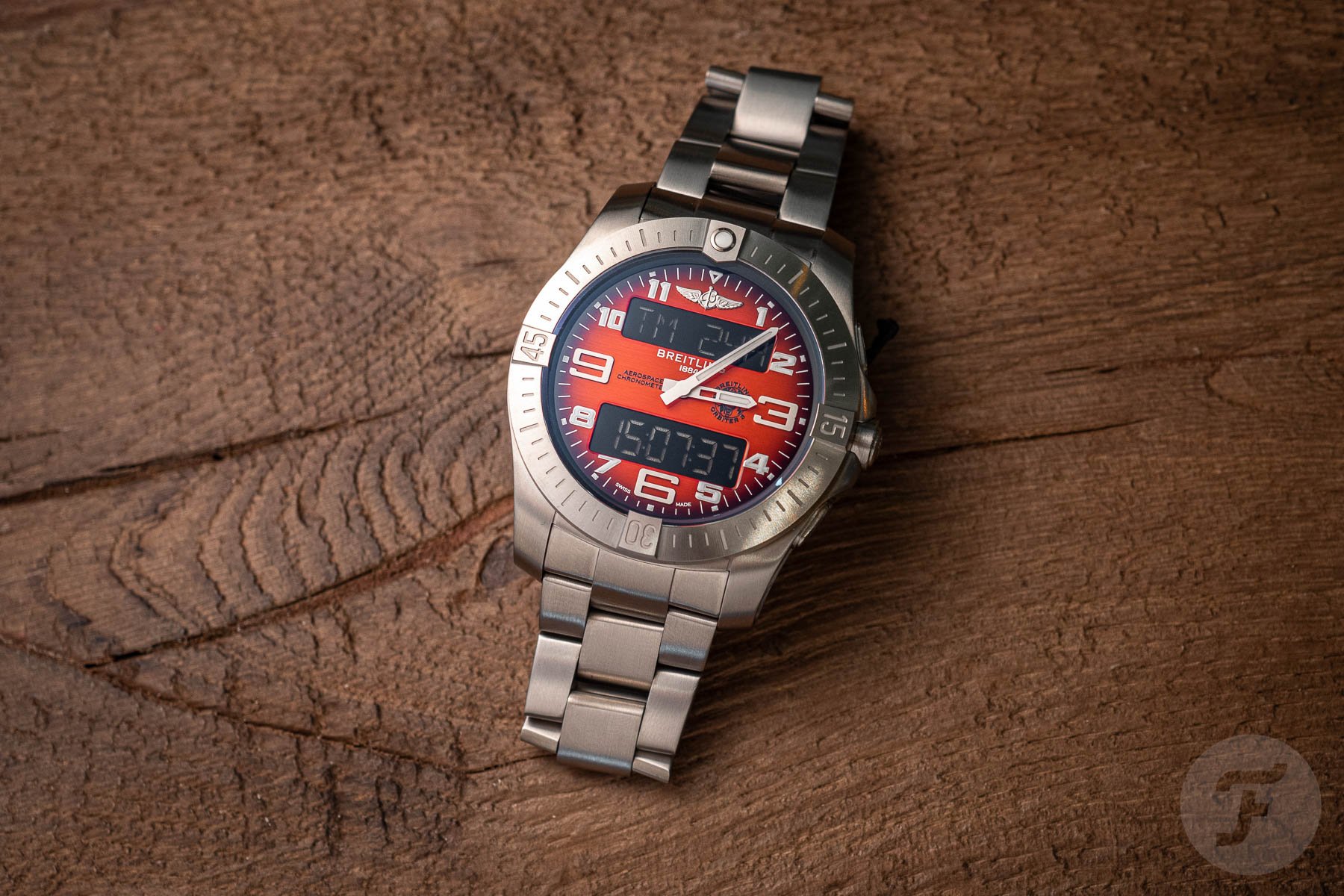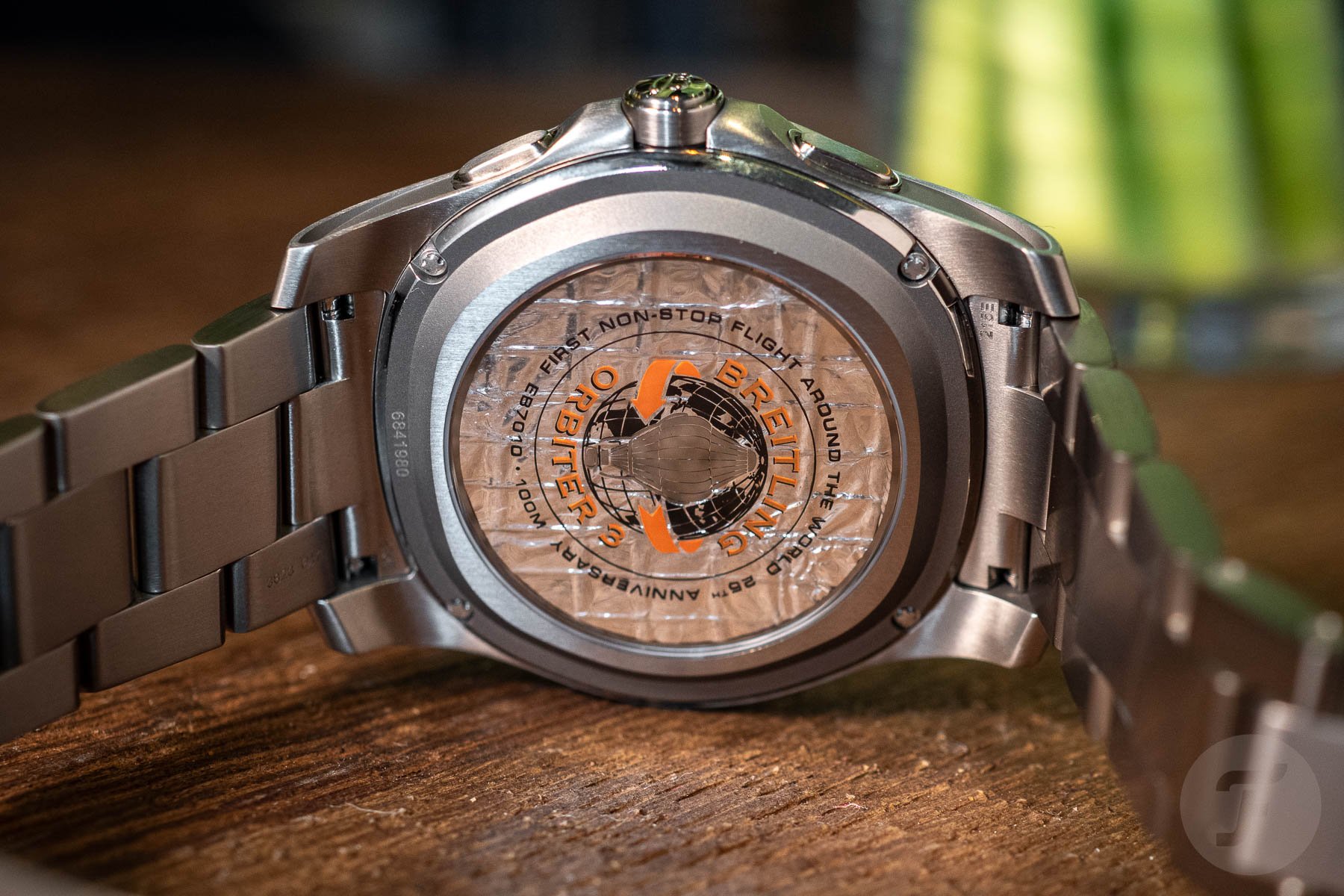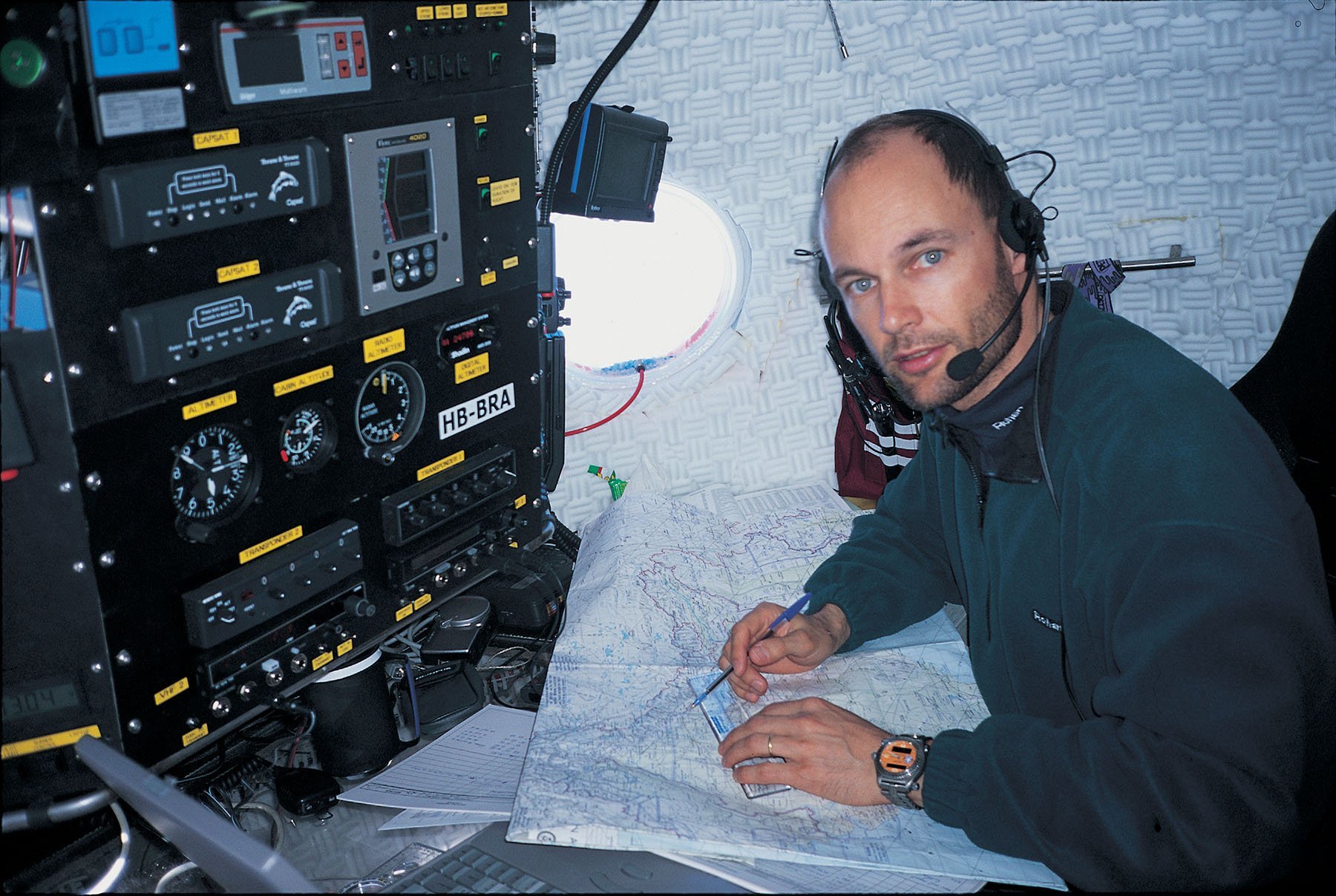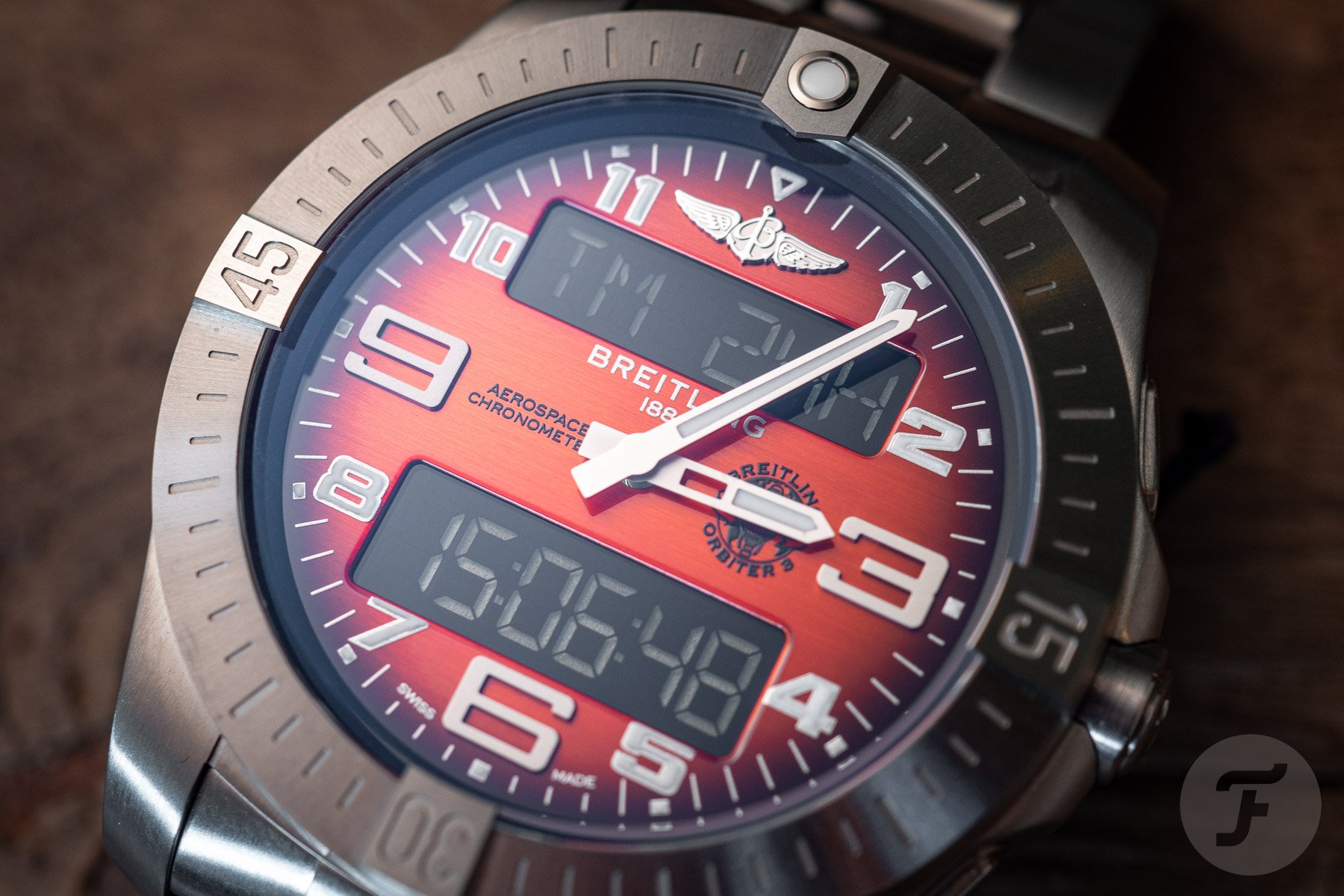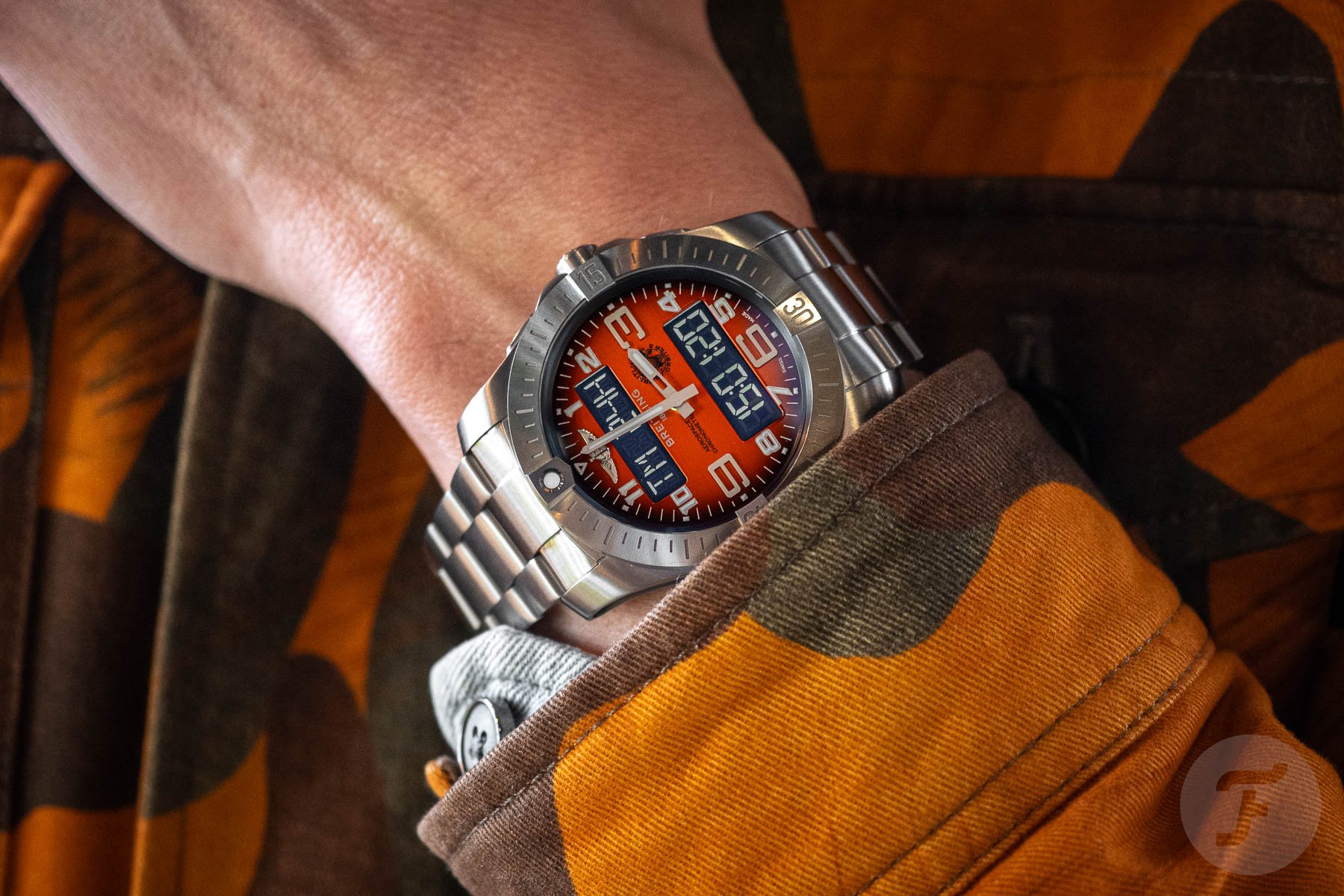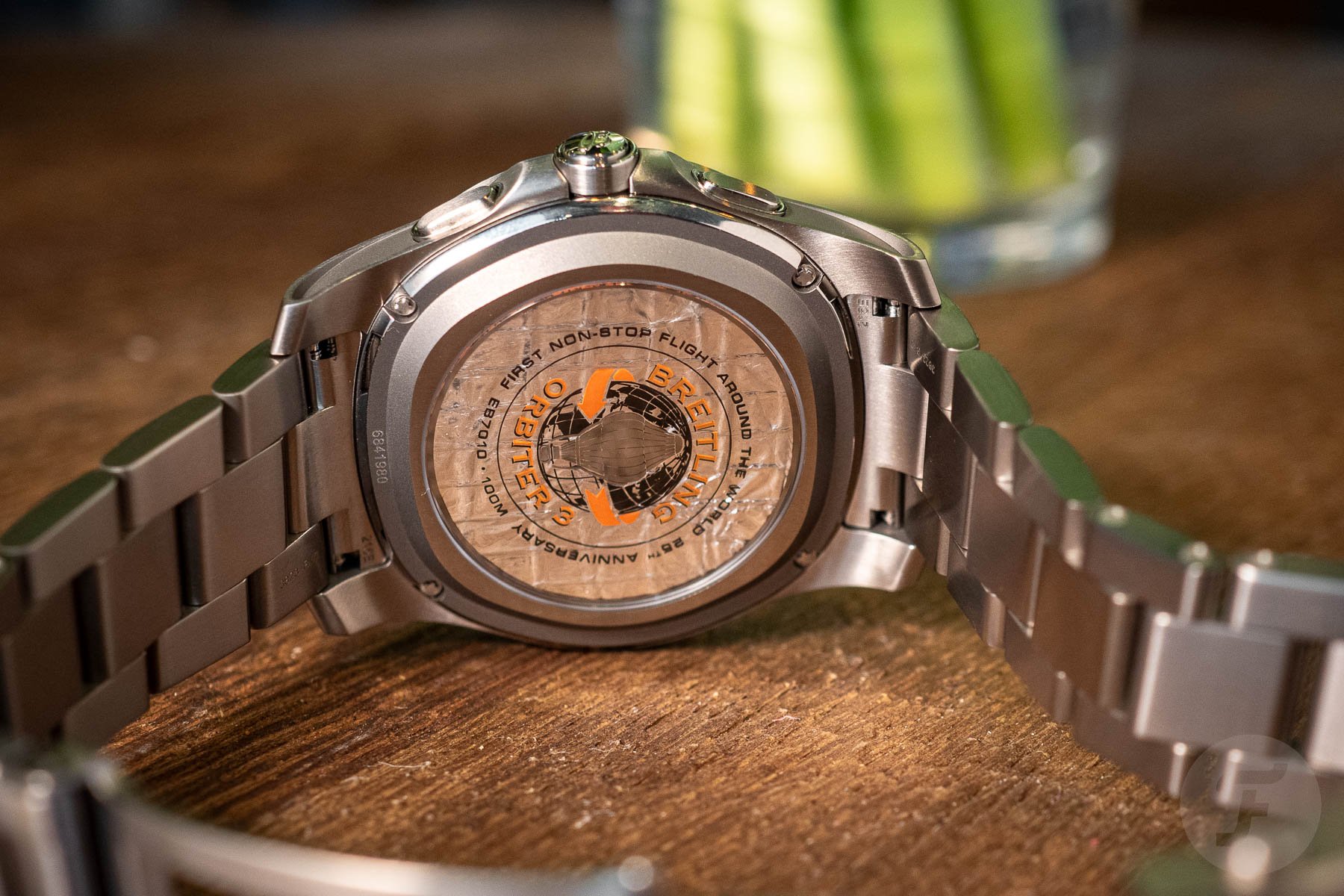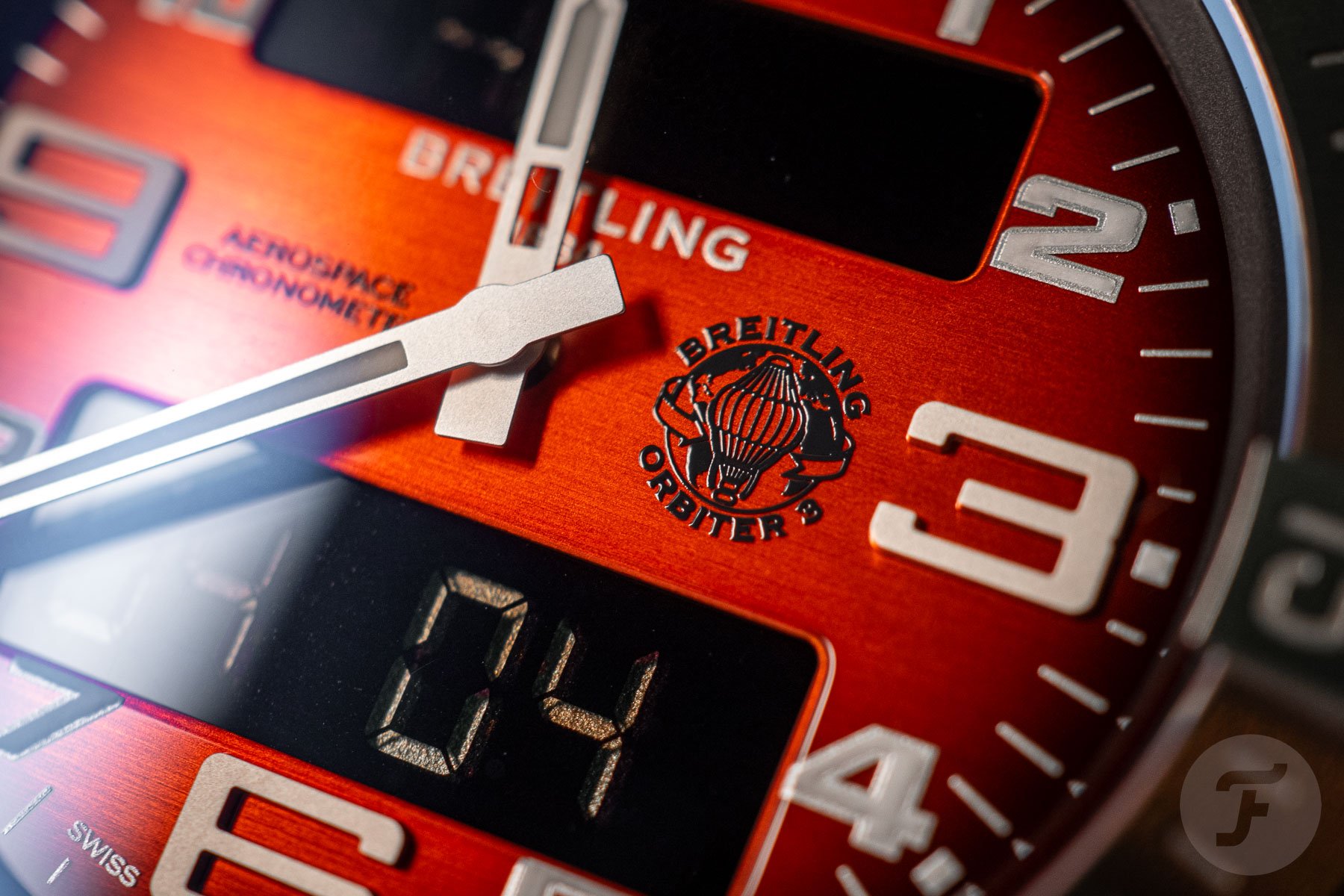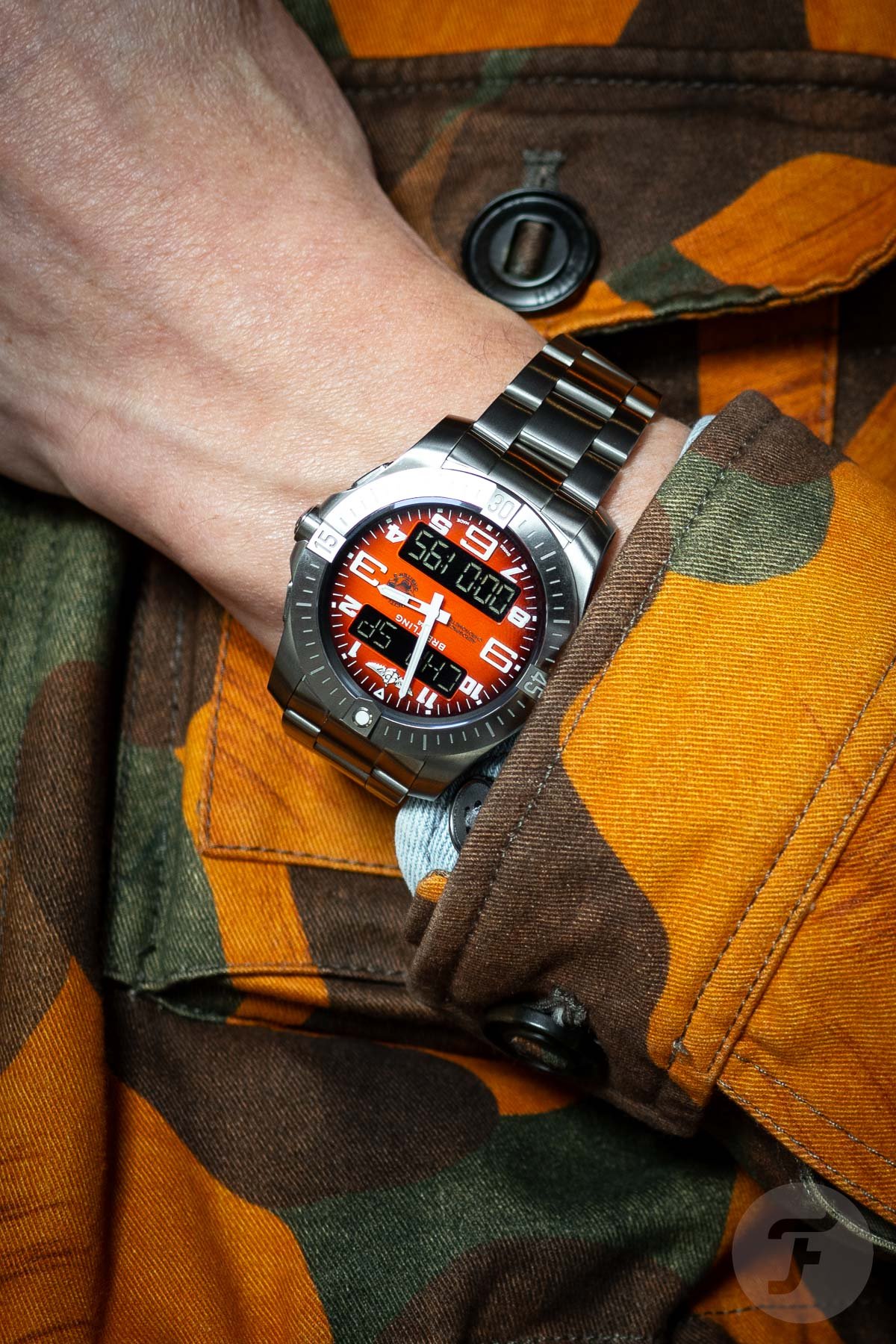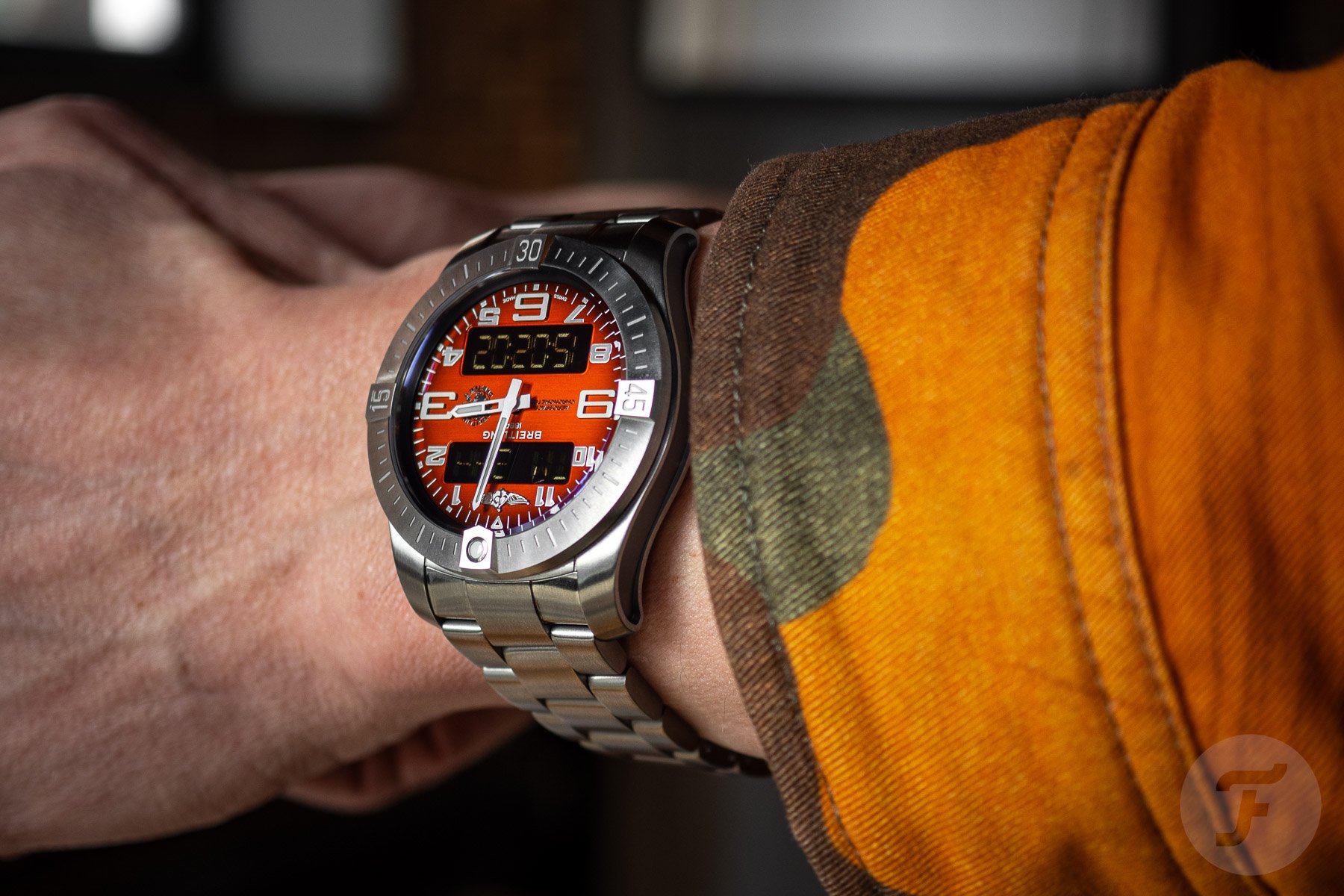A Swift Hands-On With The New Breitling Aerospace B70 Orbiter
The introduction of the Breitling Aerospace B70 Orbiter celebrates the 25th anniversary of the first nonstop balloon flight around the world. It does so with a smoky orange dial and a piece of the history-making balloon on the case back. But more importantly, it’s a completely new watch. The 2013-introduced Aerospace Evo now has a successor in the Aerospace B70, which aligns more with Breitling’s Professional collection. I recently got the opportunity to try out the newest Aerospace and find out how its three pushers work and the newly designed, bigger case fits the wrist.
In 2024, Breitling is celebrating its 140th anniversary by remembering some of its firsts. Think “the first watch on the Moon” but different — like “the first watch on a hot air balloon that flew around the globe nonstop.” The watch in question is the Emergency E76321 with an orange dial, which you can see on the left wrist of balloonist Bertrand Piccard in one of the pictures below. Twenty-five years after that watch circled our planet aboard the Breitling Orbiter 3, the brand is launching a watch celebrating that world’s first. And it’s not an Emergency but another professional pilot’s instrument. It’s the Aerospace B70 Orbiter with a smoky orange dial and a fragment of the Orbiter 3 balloon on the back.
Breitling Aerospace B70 Orbiter: the balloon is back!
Many moons ago, I owned the Emergency Orbiter 3 Limited Edition E56321. On its blue dial, a badge at 9 o’clock proudly showed that the Orbiter 3 made the first nonstop flight around the world. With the watch came a certificate signed by the two-man crew and an actual piece of the balloon in the shape of a Breitling “B”. I framed it and hung it above my desk at home, but when I sold the watch, the balloon fragment went with it. Now the balloon is back. It’s not stuck to a certificate but placed on the back of the Aerospace B70 Orbiter, a special watch that’s part of a commemorative capsule collection.
Up, up and away
Please tell me I’m not the only one who hears the song “Up, Up And Away” by The 5th Dimension in his head when reading about a big hot air balloon. Anyway, Bertrand Piccard and Brian Jones went up, up, and away in their beautiful 55m-tall Cameron R-65 Rozière balloon. They launched from the Swiss Alpine town of Château-d’Oex at 8:05 GMT on March 1st, 1999. After traveling 45,633 kilometers in 19 days, 21 hours, and 47 minutes, achieving the longest flight for both distance and duration, the two balloonists touched down in Egypt. The Orbiter 3’s Kevlar and carbon orange-painted gondola is now on display in the Udvar-Hazy Center at the National Air and Space Museum at Dulles Airport outside Washington, D.C. By the way, you can read more about the adventure in Ben’s elaborate introduction article on the Aerospace B70 Orbiter.
Clearly, orange was the color of the mission, and that’s why the celebratory Aerospace B70 Orbiter has an orange dial. But this watch, launched exactly 25 years after the Breitling Orbiter 3 landed in the Sahara sand, has a different type of orange dial than the Emergency worn on board.
Matte, bright, solid orange has made way for a darker hue and horizontal brushing on a metallic-looking dial. It’s also a gradient dial, as you can see. Is the smoky effect there because it feels more festive? Why not have a solid black outer ring around an equally solid bright matte orange dial in the spirit of the previous-generation Emergency? These are questions that need answering. So next time I get a chance to talk to Breitling CEO Georges Kern, I will ask him.
Titanium and/or rubber
The Aerospace B70 Orbiter comes in two iterations. First, there’s the reference EB70101A1O1E1, which comes on a 22mm-wide three-row bracelet with slanted center links and in the same lightweight titanium material as the newly shaped 43 × 52.25 × 12.95mm case. And then there’s the reference EB70101A1O1S1. This version comes on a black rubber strap with a (luxurious) folding clasp instead of a (utilitarian) pin buckle. Breitling is most definitely celebrating the first balloon flight around the globe with chilled champagne instead of an ice-cold beer.
On the front, there’s a bidirectional, ratcheting bezel. On the back of the watch, you’ll not only find a piece of the original balloon on display but also the Breitling Orbiter 3 mission logo around its perimeter and the inscription “First non-stop flight around the world 25th anniversary.”
Mission logo on the dial
On my Emergency of yesteryear, the Breitling Orbiter 3 mission logo was at 9 o’clock and in full color. On the new Aerospace B70 Orbiter, that logo is in black, placed at 3 o’clock, and looks quite subtle. Maybe it’s even a bit too modest. In any case, it certainly doesn’t distract you from looking at the analog hands and the watch’s two digital displays. Also, the numerals, indexes, and hands are coated with Super-LumiNova, making them legible in low-light conditions.
The wearer can operate the new Aerospace via the three integrated push-pieces on the right side of the case. It should be more intuitive and quicker to operate than the single-crown setup of the previous Aerospace generation. The trio of pushers is there to allow the wearer to make full use of the newly designed COSC-certified Breitling Manufacture Caliber B70. This thermocompensated SuperQuartz ana-digi movement delivers, according to Breitling, 10 times the accuracy of a standard quartz watch. There are a lot of functions at hand, such as a 1/100th-of-a-second chronograph (with split-time and flyback functions), countdown timer, second time zone, two alarms, lap function, and perpetual calendar.
Wearing the Breitling Aerospace B70 Orbiter
The price of the new Aerospace B70 Orbiter on a titanium bracelet is €4,800, while the version on a black rubber strap will set you back €4,600. The newly sculpted case and revised way of operating the many functions inside the new Aerospace require some acclimation. The “old” Aerospace Evo, which is also still available, measures 43mm wide, 52mm long, and 10.8mm thick. The Aerospace B70 is only marginally larger (43mm wide, 52.25mm long, and 12.95mm thick), but margins matter in the world of horology. Because they do, the new Aerospace feels a bit bigger on the wrist than the old one. But with a weight of just over 109 grams (approximately four grams heavier than the Evo) on a bracelet, wearing the watch is unproblematic.
A single crown versus three pushers
What’s equally unproblematic is the new operating system with three pushers. Owners of previous-generation Aerospace watches with the caliber B79 inside rave about how easy it is to operate the watch with just a single crown. The B70 movement took a long while to develop and build. But now that it’s ready, it sure is an evolution of the caliber inside the Evo. Sure, the one-crown system has a certain elegance, but it’s faster and more intuitive to use three separate pushers to go through and use the different functions. What is also very neat and practical is that the digital displays light up when operating the different functions. It makes for perfect readability.
The new Aerospace B70 is slightly bigger, ever so slightly heavier, and (just) €550 more expensive than the Evo. It’s also more refined. The case with its sculpted, streamlined sides is an aesthetic upgrade. And the new caliber B70 is an instrumental update in every practical way. Now it’s time to patiently wait for other dials than the metallic orange one. In my opinion, it doesn’t belong in a professional timing instrument, no matter the special occasion. Powdery blue, black, yellow, and orange dials are what I’m waiting/hoping for. How about you?

